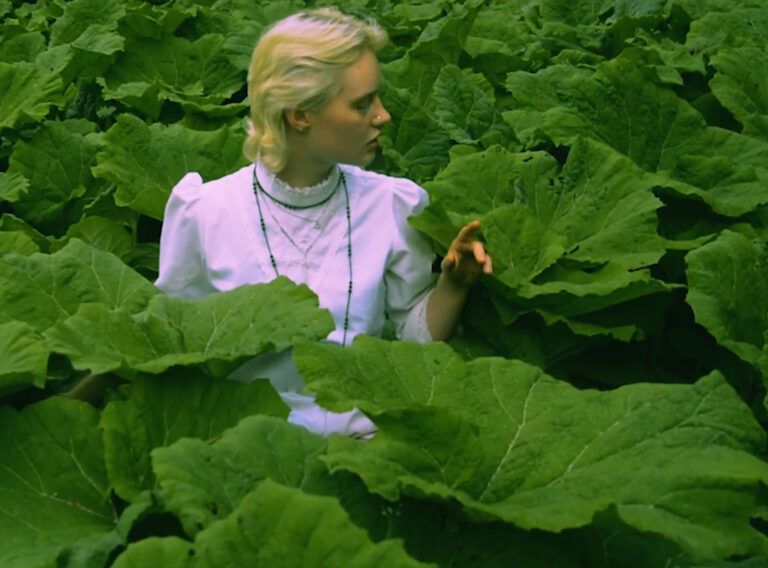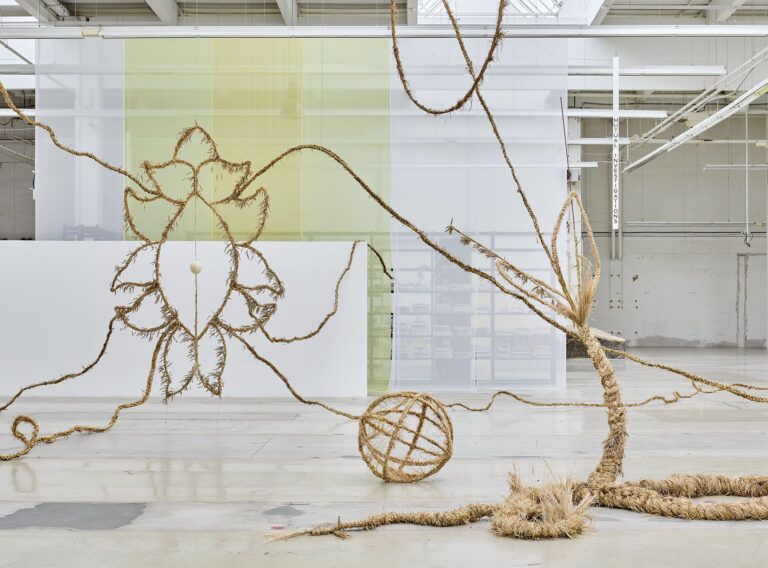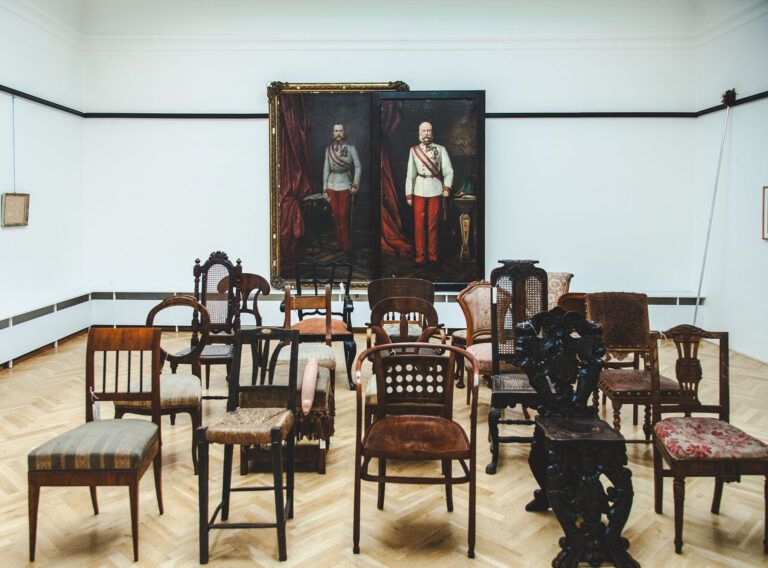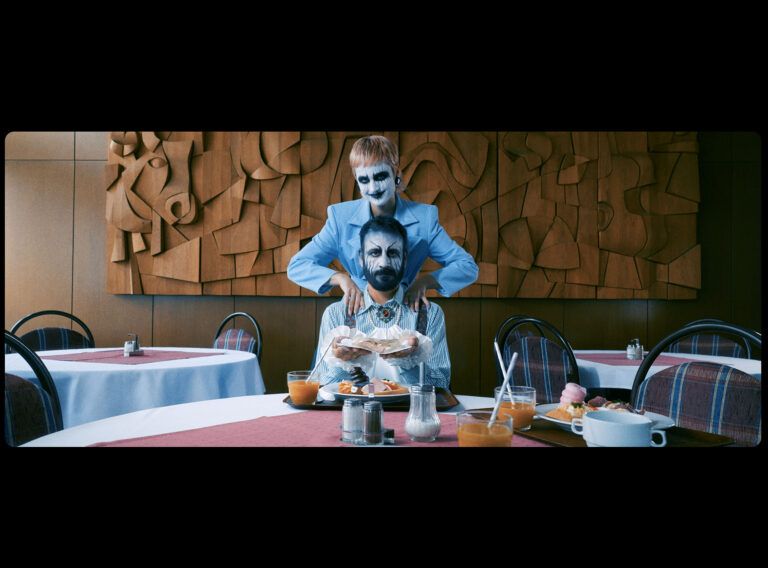Figuring Age portrays three elderly dancers from Budapest, aged between 90 and 101. The work consists of a durational performance and a two-channel video installation running simultaneously in separate spaces. In 2015, choreographer and performer Boglárka Börcsök had the chance to meet several elderly dancers in Budapest. Wanting to work with some of them and knowing that their age would make it impossible to bring them back on stage, Börcsök and filmmaker Andreas Bolm decided to create a documentary called The Art of Movement. It portrays Irén Preisich, Éva E. Kovács and Ágnes Roboz, who were once part of the early development of modern dance in Hungary. During the filming, Börcsök’s role alternated between dialogue partner and dance student to stimulate the elderly dancers’ bodies and memories. The physical engagement continued during the editing process. Bolm and Börcsök watched the footage again and again to study the gestures, movements, and personal stories of Irén, Éva and Ágnes. Börcsök let the ladies invade her like ghosts and began to perform them.
The aging body does not contain only one body. Rather, it is multiple bodies layered in time and decay, in memories and experiences. Figuring Age interweaves the stories and memories of the elderly dancers with their everyday gestures, postures and dance movements, tracing how the three women changed their lives and movement practices to survive the sociopolitical shifts of the 20th century. Börcsöks embodiment of Irén, Éva, and Ágnes is a continuous work of transforming and becoming – a Vertigo. The slowness and fragile heaviness of the old bodies demand a different economy of attention, giving visitors space to rethink and negotiate their relationship to aging and death. In a separate room, the two-channel video installation reveals Irén, Éva, and Ágnes in their private homes. The stillness of their rooms, filled with personal objects and memories, becomes the scenographic backdrop for their dynamic performances on screen.
How did the idea for “Figuring Age” originate, and what inspired you to work with elderly dancers?
Figuring Age emerged from a documentary film with three pioneering women in Hungarian modern dance. My interest in working with these women stemmed from personal experiences and a desire to explore Hungarian dance history. My grandmother’s battle with Alzheimer’s and subsequent memory loss influenced my approach, allowing me to build a meaningful relationship with Irén, Éva, and Ágnes.
Can you share more about your experience creating the documentary “The Art of Movement” and the initial interactions with Irén, Éva, and Ágnes?
The documentary was a necessary step due to the urgency of working with the elderly dancers. My initial interactions were deeply influenced by personal experiences, such as caring for my grandmother. These interactions were not just about filming but about building a close relationship and understanding their life experiences.


How did you approach interweaving the stories and memories of the elderly dancers with their everyday gestures, postures, and dance movements?
I aimed to create an inter-generational exchange, intertwining the dancers’ experiences, resilience, and silences with their physicality. Their histories, particularly their resilience and struggles, were intricately connected to their bodily movements and gestures.
The description mentions the slowness and fragile heaviness of the old bodies. How did these qualities influence your choreographic choices and the overall atmosphere of the performance?
These qualities were central to our choreographic approach. We meticulously recreated and enhanced their postures and gestures, focusing on the sensation of their weight and the slowness of their movements. This required immense physical effort to sustain the sensation of old age, creating a performance that felt like encountering different individuals.



How did you decide on the two-channel video installation format, and what role does it play in enhancing the viewer’s experience?
The performance-installation is devised as a parcour for the audience. They are invited to encounter the elderly dancers in a fictional ghost scéance that happens between the medium of film and performance.
What impact do you hope “Figuring Age” will have on the audience in terms of rethinking their relationship to aging and death?
The performance is a political act of carrying forward the histories and stories of these women. It confronts the audience with the physical transmission of knowledge and the embodiment of age, potentially influencing their perception of aging and the continuity of stories through generations.


How did your collaboration with filmmaker Andreas Bolm enhance the storytelling and visual aspects of the project?
My collaboration with Andreas Bolm was integral, allowing for a deep involvement with the subjects. This collaboration went beyond the project’s concept, enriching the storytelling and embodying the dancers’ experiences and movements in a visually impactful way.




